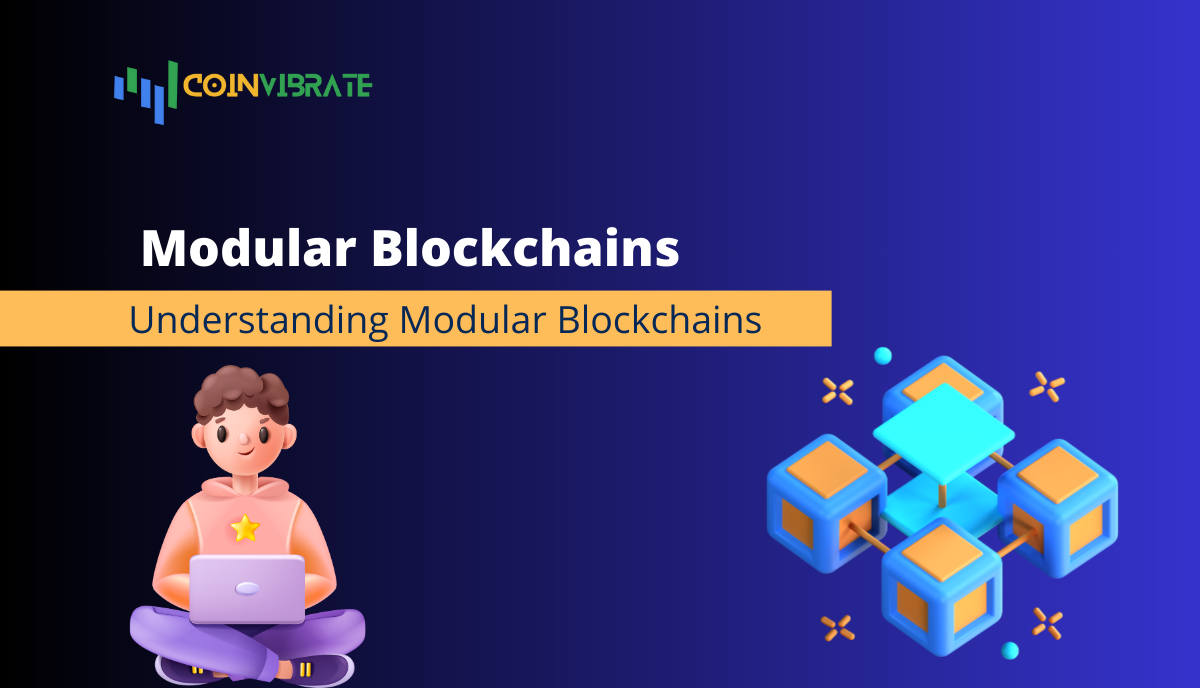A multi-layered strategy that may maximize network scalability, security and flexibility is introduced by modular blockchains.
Modular blockchains provide greater efficiency while maintaining security and decentralization by focusing on certain roles like execution, settlement, consensus, and data availability.
Many such as Celestia and Dymension and others are researching the possibility of modular blockchain systems to solve the blockchain trilemma problems.
Trilemma includes trade offs between scalability, decentralization and security.
Since its creation, the community around blockchain has grown significantly, with developers always looking for new methods to improve scalability, security and decentralization. Scalability, upgradability, and hardware needs for validator nodes are common issues with the outdated monolithic method, in which a single chain manages all functions. The idea of modular blockchains has come up as an alternative solution for these issues.
Table of Contents
Read More: What is Bitcoin and its Explanation?
What Are Modular Blockchains?
The monolithic blockchain approach has been replaced by modular blockchains, which instead use a multi-layered design that divides basic tasks into roles that are specific. Modular blockchains seek to achieve greater scalability and customization of the system without sacrificing security or decentralization by allocating distinct functions to various layers.
How Modular Blockchains Work?
Execution, settlement, consensus, and data availability are the four primary tasks that modular blockchains typically specialize in. Transactions are processed during execution, settlement protects transaction destinations, consensus confirms the validity of transactions and data availability describes how transaction data is kept. Greater flexibility and efficiency are made possible by this modular design, which presents an achievable solution to address the scalability issue with blockchain technology.
Exploring Modular Networks
Modular blockchains may be implemented in a variety of ways, each with its own special features. Sovereign rollups, rollups, and validium are important examples.
As an execution layer, rollups execute transactions and broadcast data to a layer-1 network (L1).
A rollup variant called Validium handles transactions off-chain before sending the information to the L1. Additionally, a network of validators is necessary for it to function.
By serving as both an execution and settlement layer and publishing data blocks straight into the rollup, sovereign rollups set themselves apart. L1 smart contracts are not necessary for sovereign rollup validation.
Pros and Cons of Modular Blockchains
Compared to monolithic designs, the modular blockchain design has several advantages in terms of interoperability, scalability, and adaptability. However, constructing on modular blockchains might be more complicated, presenting a difficult learning process for users and developers despite the benefits.
Pros
Enhanced scalability: By shifting resource-intensive operations to other levels, modular blockchains achieve exceptional scalability without sacrificing decentralization.
Flexibility and interoperability: Because of their extreme flexibility, modular base layers encourage communication across various layer-1 and layer-2 chains. Because of this convenience, developers may run alternative virtual machines or the Ethereum Virtual Machine (EVM).
Versatile application development: Users inside the blockchain ecosystem experience fewer obstacles thanks to the modularity of blockchains, which facilitates the creation of universal apps. This adaptability promotes the development of more safe and effective decentralized applications (DApps).
Customizable tech stacks: With a customized tech stack, developers may select the virtual machine that best fits their requirements. This makes the environment more flexible and developer-friendly.
Cons
Complexity in development: Comparing modular blockchains to their monolithic designs, building on them can be more difficult. Both users and developers face a difficult learning process due to the complexity which could delay growth and development.
Limited testing: Compared to its monolithic opponents like Ethereum or Bitcoin, modular networks are not as well-established. There are questions over the modular landscape’s ability to withstand high traffic and real-world situations because the established chains’ intensive testing and validation have not yet been duplicated there.
Early stage development: The development of modular blockchains is still in its early stages. These networks lack the comprehensive real-world testing and validation that comes with maturity, despite the market’s excitement. Modular blockchains’ long-term durability and effectiveness may become unclear at this early stage.

Examples of Modular Blockchains
Celestia
Celestia is a modular network that enables blockchains to safely grow without sacrificing speed in the context of modular blockchains. Celestia can be used by rollups and layer-2 networks to provide efficient and rapid data availability while also providing transaction data to the public. Celestia uses a number of characteristics, like sovereign roll ups and data availability sampling, to do this. As more nodes join Celestia’s network, it is able to grow its block size through data availability sampling.
Dymension
RollApps, or quickly deployable modular blockchains, make up the Dymension network. Dymension functions much like a conventional full-stack web application. Dymension is the back-end that manages the ecosystem, while the RollApps network serves as the front-end (user interaction). Furthermore, there exist networks for data availability that serve as databases and supply data as needed.
Read More: What is Ethereum and its Key Features of Ethereum?
Wrap-Up Modular Blockchains
Modular blockchains adaptability and interoperability might open the door to a decentralized ecosystem that is safer and more effective. In the future, modular networks could enable a wider variety of DApps and use cases, which might raise the standard for DeFi. The use of modularity in the crypto industry is going to increase as long as development teams keep their attention on finding a solution to the scalability trilemma.
